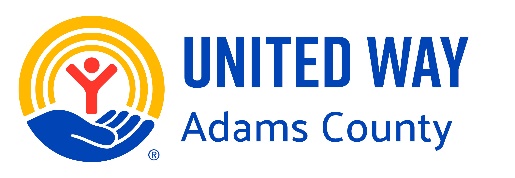Data indicates nearly 40 percent of Adams County residents struggling with local cost of living

QUINCY — New data published earlier this week shows nearly 40 percent of households in Adams County are struggling to afford housing, childcare, food, transportation and healthcare costs.
It’s one of the key findings in the 2024 Community Needs Assessment, a comprehensive analysis of the well-being of Adams County residents published every three years since 2001 by United Way of Adams County in collaboration with the Adams County Health Department and Blessing Health. The findings are used by various agencies and organizations “to inform and implement community-wide initiatives and strategies for improving the overall well-being of Adams County residents,” as stated in the publication’s introduction.
The 40 percent figure is broken down into two categories. Roughly 12 percent of residents live in poverty, while 27 percent fall into the ALICE (asset-limited, income-constrained, employed) population. Those who fall into the latter category generate an income level above the federal poverty line but below the cost of living and often don’t qualify for governmental assistance like food stamps and low-income housing.
Federal guidelines indicate that a single person must make $15,060 or less and a family of four must make $31,200 or less to be considered living in poverty.
Roughly 24 percent of Illinois residents fall into the ALICE population, up from 23 percent in 2018. On a local level, though, the latest discoveries mark a stunning increase of eight percentage points in the ALICE population of Adams County since 2019 (when it was at 19 percent).
“The updated assessment takes a deeper look at areas of concern and offers the most compelling evidence yet to inform our efforts,” Natalie Cornwell, director of community impact for United Way, said in a news release. “This data highlights the need for increased collaboration among agencies to better serve those in need.”
The 2024 assessment contains more than 100 data points across various areas of focus:
- a general Adams County community profile, along with an ALICE population-specific profile;
- health reports on community well-being and behavioral health;
- an overall profile on children and youth, along with reports on child care and education;
- and an overview of financial security and a report of financial security in the context of housing.
The full 2021 and 2018 assessments are available on the United Way’s website, with plans to publish the full 2024 assessment on their website later this spring.
Three in four Black households, half of young adults and senior citizens struggling to pay for necessities
Black households have a larger share of ALICE residents than any other racial or ethnic group, with 60 percent of residents falling into the category. With the additional consideration of households living in poverty, only one in four Black households can afford their basic needs.
Almost half of all Adams County residents under the age of 25 (47 percent) and just over half of residents over the age of 65 (53 percent) fall into the category, along with three out of four single mothers and nearly six out of 10 single fathers. Roughly one in three children in Adams County live in single-parent households.
The township of Quincy has the largest percentage of households living below the ALICE threshold in the county, with 46 percent of 17,373 households. The average weekly wages in Adams County are significantly below the national average; $1,092 per week locally, compared to $1,435 nationally. (The industry employing the largest share of Adams County residents is “educational services, health care and social assistance” with 26.8 percent.)
There is good news, though.
The county falls far below state and national averages for the percentage of motor vehicle deaths that involve alcohol. Roughly 26 percent of all motor vehicle deaths that occurred in the United States in 2021 and about 27 percent of those in Illinois involved alcohol, while zero percent of motor vehicle deaths involved alcohol in Adams County.
Substance abuse amongst Adams County teens in nearly every category — alcohol, cigarettes, marijuana, prescription pain medication and vapes — has continued in a downward trend over the last five years. (Illicit drug use, like cocaine, heroin and meth, has risen just slightly.)
Yet another interesting find pertains to marijuana use in the county, which became legal at the beginning of 2020 — one in five residents reported using it in the last 30 days at the time they were surveyed. By comparison, 16.9 percent of Illinois adults and 18 percent of adults in the U.S. reported recent use.
Efforts to collect and publish the data found in the Community Needs Assessment first began in 2001 with United Way of Adams County, University of Illinois Extension and the Adams County Health Department. Blessing Health joined the initiative in 2010 after the Affordable Care Act was implemented, which required non-profit hospitals to have a “community health improvement plan.”
Be sure to check out next week’s episode of MRN This Week (premiering Sunday) where David Adam speaks with Jenna Hull and Natalie Cornwell from United Way of Adams County about their most recent findings.
Miss Clipping Out Stories to Save for Later?
Click the Purchase Story button below to order a print of this story. We will print it for you on matte photo paper to keep forever.

